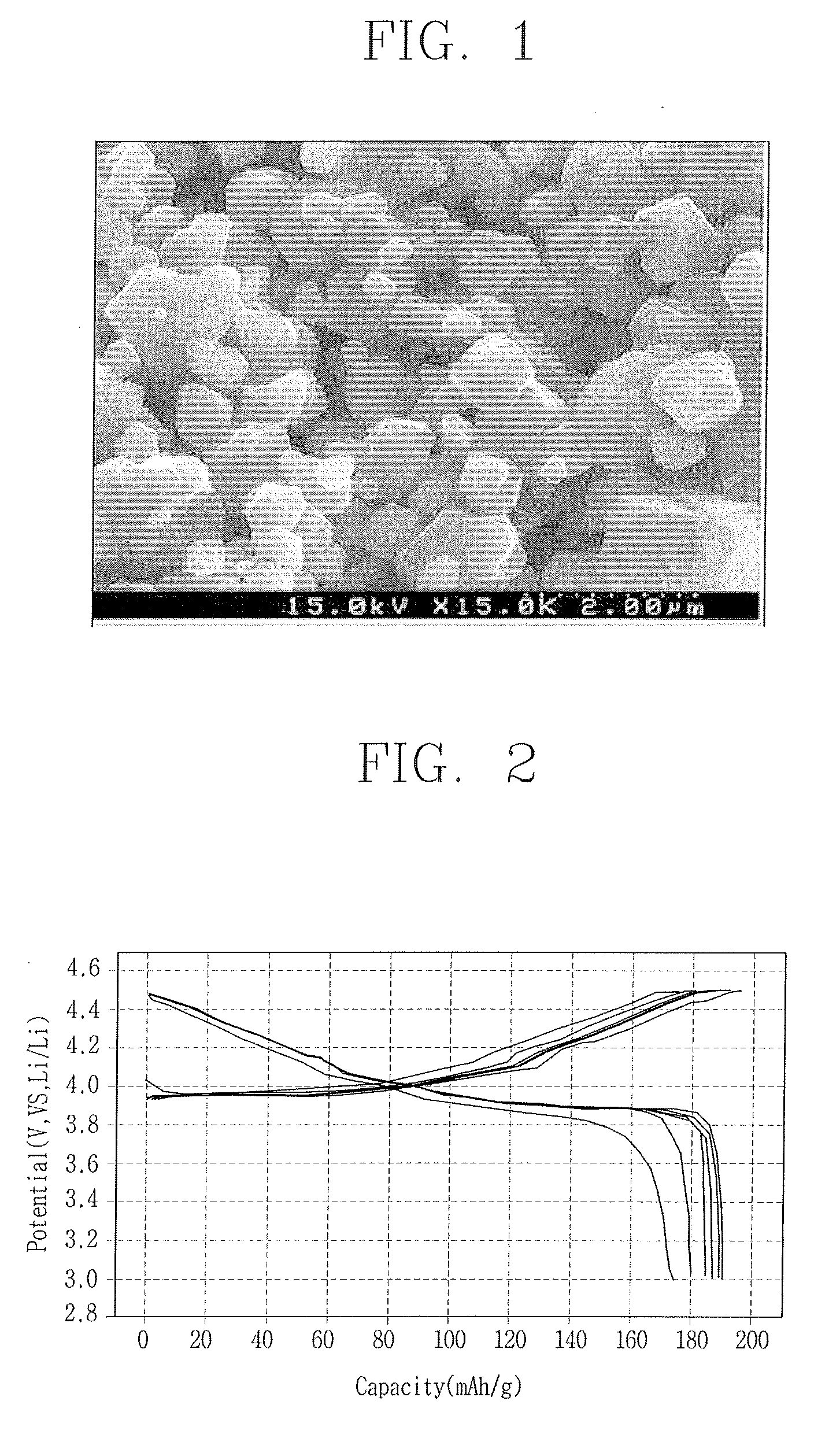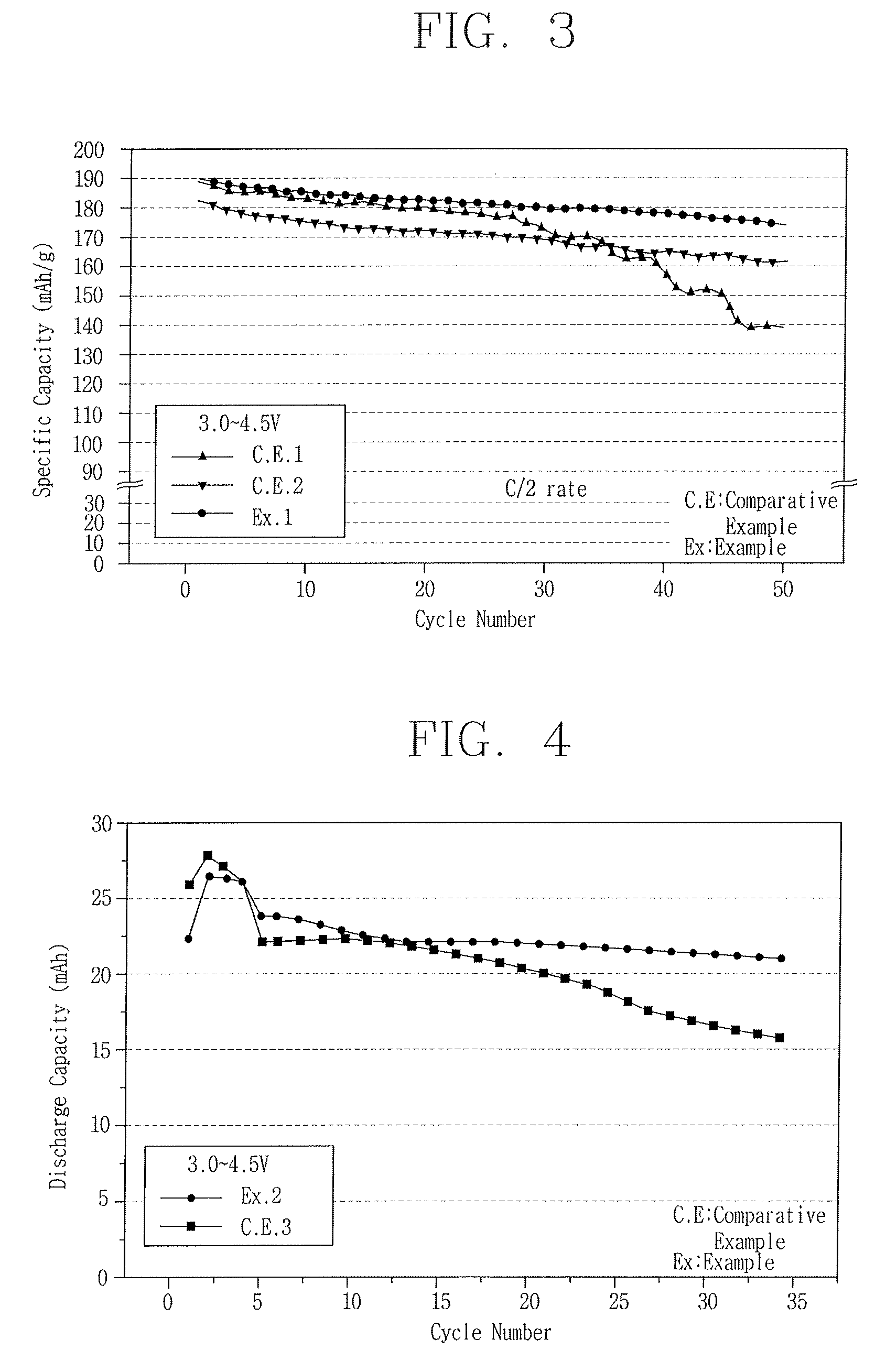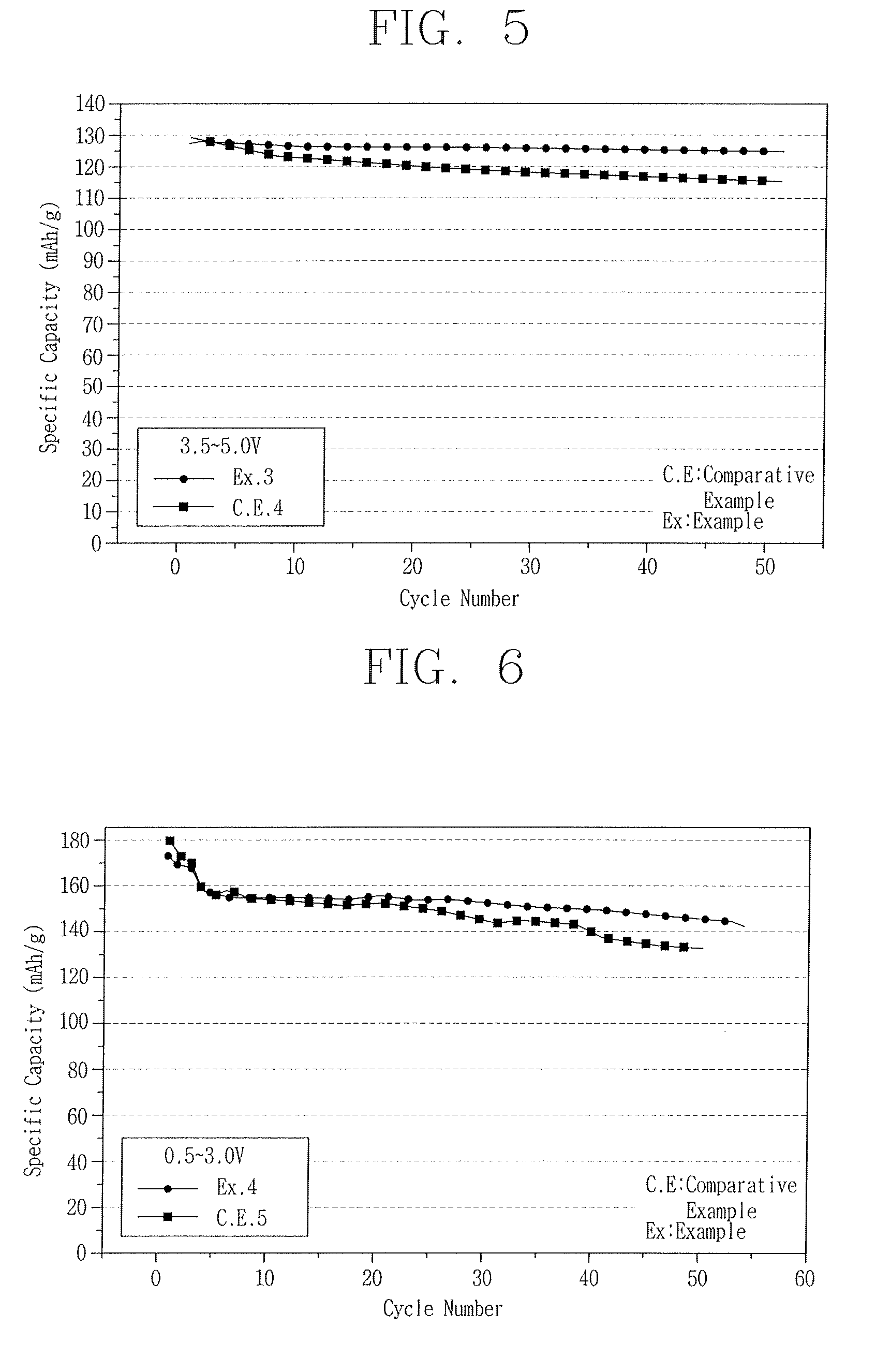Fabrication method for electrode active material and lithium battery comprising electrode active material fabricated therefrom
a technology of active materials and electrode active materials, which is applied in the direction of manganates/permanentanates, nickel compounds, alkali titanates, etc., can solve the problems of increasing fabrication costs and fabrication duration, and achieving excellent life span and high performan
- Summary
- Abstract
- Description
- Claims
- Application Information
AI Technical Summary
Benefits of technology
Problems solved by technology
Method used
Image
Examples
example 1
[0045]4.5 g of Zirconium(IV) Acetate Hydroxide was dissolved in 145.5 g of distilled water. Then, lithium carbonate and cobalt nitrate were added and dissolved into the solution with a mol ratio of 1:1 so that the respective metallic ions could have a concentration of 1M. Here, a proper amount of dopant and metallic salt for surface-reforming were added and dissolved into the resulting material according to a final chemical formula.
[0046]Then, the solution was maintained at a temperature of 80° C. in an oven, thereby having moisture evaporated therefrom. In a gel state, the solution was moved to an alumina furnace thus to be thermal-processed for 12 hours at a temperature of 800° C. Then, the resulting material was crushed to fabricate a cathode active material of LiCoO2. FIG. 1 shows a scanning electron microscope (SEM) photo of the cathode active material.
[0047]Then, 9 g of the cathode active material of LiCoO2 and 6 g of acetylene black were mixed to 50 ml of NMP where 4 g of PVD...
example 2
[0052]4.5 g of Zirconium(IV) Acetate Hydroxide was dissolved in 145.5 g of solution. Then, lithium carbonate, cobalt nitrate, nickel nitrate, and manganese nitrate were added and dissolved into the solution with a mol ratio of 1:1 / 3:1 / 3:1 / 3 so that the sum of each concentration of the metallic ions could be 2M, thereby fabricating a cathode active material of LiCo1 / 3Ni1 / 3Mn1 / 3O2. Other conditions and methods were the same as those of the example 1 except that a thermal-processing was performed for 12 hours at a firing temperature of 900° C. Cycle life span characteristics of the cathode active material were shown in FIG. 4.
example 3
[0054]4.5 g of Zirconium(IV) Acetate Hydroxide was dissolved in 145.5 g of solution. Then, lithium carbonate, nickel nitrate, and manganese nitrate were added and dissolved into the solution with a mol ratio of 1:0.5:1.5 so that the sum of each concentration of the metallic ions could be 3M, thereby fabricating a cathode active material of LiNi0.5Mn1.5O4. Other conditions and methods were the same as those of the example 1 except that a thermal-processing was performed for 12 hours at a firing temperature of 900° C. Cycle life span characteristics of the cathode active material of LiNi0.5Mn1.5O4 were shown in FIG. 5.
PUM
 Login to View More
Login to View More Abstract
Description
Claims
Application Information
 Login to View More
Login to View More - R&D
- Intellectual Property
- Life Sciences
- Materials
- Tech Scout
- Unparalleled Data Quality
- Higher Quality Content
- 60% Fewer Hallucinations
Browse by: Latest US Patents, China's latest patents, Technical Efficacy Thesaurus, Application Domain, Technology Topic, Popular Technical Reports.
© 2025 PatSnap. All rights reserved.Legal|Privacy policy|Modern Slavery Act Transparency Statement|Sitemap|About US| Contact US: help@patsnap.com



